Ana Sofia Schneider
The Sustainable Development Goals (SDGs) seem to be shooting for the moon to land among the stars: it might not be the goals what matter now, with only ten years left to achieve them, but setting ourselves in the path towards them. Yet leaving some countries alone in arriving at this path could lead to hiding the problems behind nice masks or to broken promises. Supporting other countries is indispensable if we want to make sure we land at least among the stars and avoid landing on another, worse place. And even more crucial is the participation of each and every one of us – as NGOs, as companies, as citizens.
To show you the complexity behind what these goals are aiming to solve and the importance of working together to reach them, I chose to relate the situation of one country, Guatemala, with four Targets of the SDG 11, which is to “make cities and human settlements inclusive, safe, resilient and sustainable”.1
1. Natural disasters and a country with active volcanoes, landslides and floods
Globally, Guatemala ranks 5th among the countries with the highest economic risk exposure to three or more natural hazards.2 These include earthquakes, landslides, floods and volcanic eruptions. Despite its risks, houses in ravines and near volcanoes are very common. So, what are some of the challenges for reaching target 5, which is to “significantly reduce the number of deaths and the number of people affected and substantially decrease the direct economic losses relative to global gross domestic product caused by disasters by 2030”?1
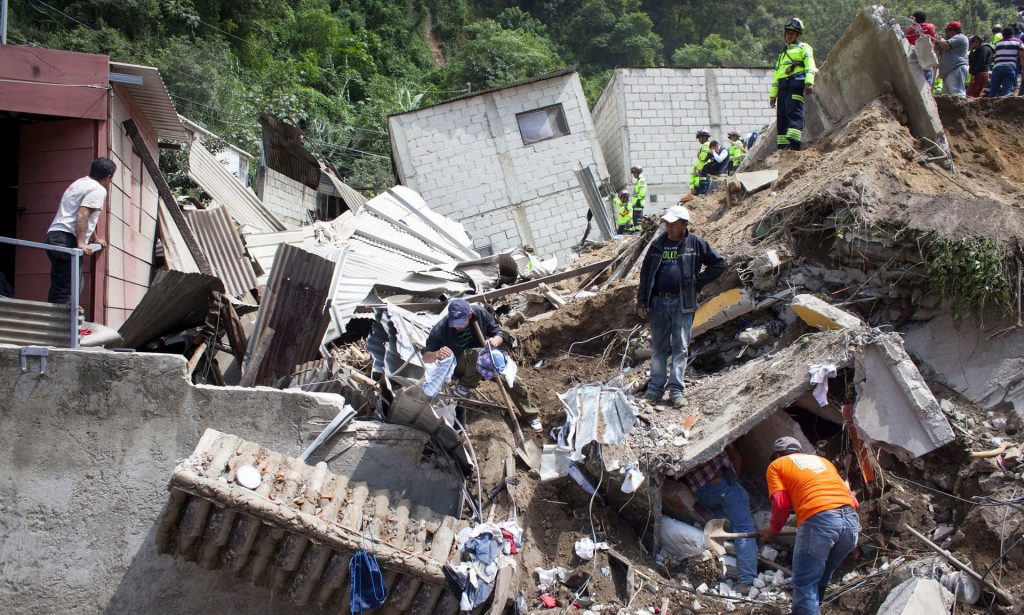
Figure 79.1 – Rescue workers and firemen searching for survivors after the landslide in El Cambray Dos. (Image: https://www.theguardian.com/)
A tragedy related to natural disasters and unsafe housing happened in 2015, when a mudslide hit the village El Cambray Dos. This neighborhood was located close to the capital, at the bottom of a ravine. After heavy rains, the community was completely buried under a huge amount of soil, mud, and debris.
This event opened the eyes of many Guatemalans, who started to question why people are allowed to build houses in areas of such a risk. There is a lot of controversy on that: the National Coordination for Disaster Reduction (CONRED), said it warned the residents about the risk, whereas the house owners – who had “proper” building permits – said they never had any warning of landslide danger.3
Another recent example of a natural disaster related to unsafe housing is the catastrophic eruption of the Fuego volcano in 2018. According to CONRED, 201 people died, 229 are missing, and almost 2 000 were affected.4 This severe volcanic eruption included lahars, pyroclastic flows and clouds of volcanic ash, which left villages buried in ashes.
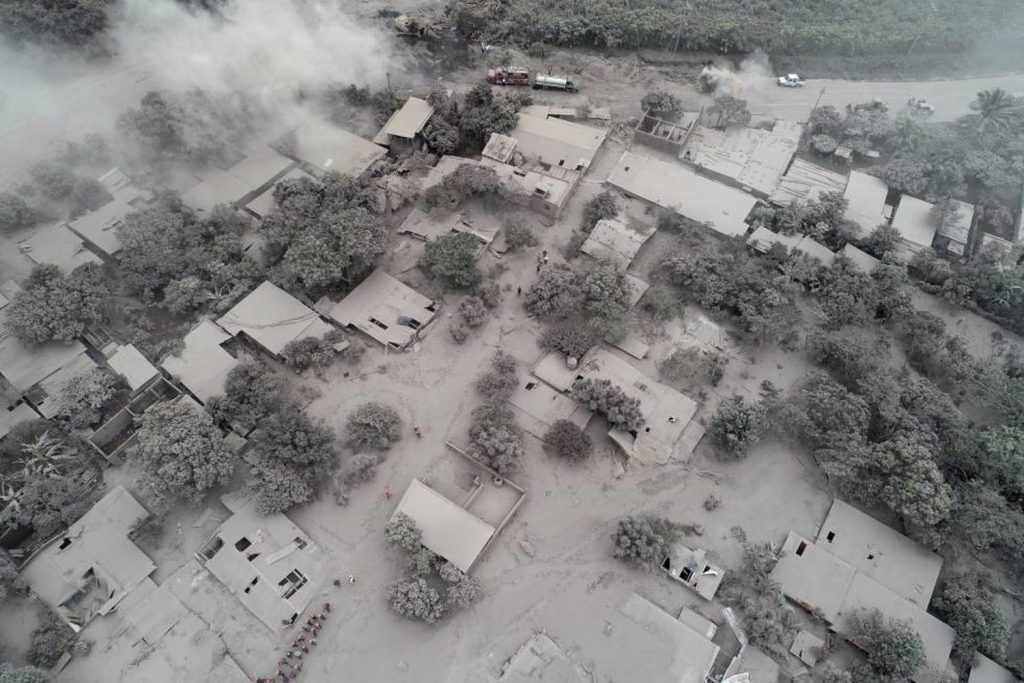
Figure 79.2 – One of the towns affected by the eruption in 2018, covered in ashes. (Image: https://english.elpais.com/)
With 324 identified structures of volcanic origin, of which 34 are denominated as volcanoes, three are currently active and one has fumarole activity, volcanoes are a big part of Guatemala’s landscape.5 As a result, even though it is well known that some volcanoes are active, as is the case of Fuego, many people continue to live near them – mainly poor, often indigenous people. One of the problems with this is that they were used to the volcano being active, and they didn’t react as fast as they could have – there are some videos of people filming the eruption instead of evacuating. An additional aspect that makes people stay close to the volcanoes, other than not having any other option, is that volcanoes play an important role in their culture, traditions and beliefs. This is especially the case for the Mayan culture, for which the earth is sacred, and therefore volcanoes too. They are seen as powerful beings which can destroy but also guard and nourish, providing fertile lands for agriculture.6
Sadly, it is questioned whether the authorities in charge of warning the population (CONRED and INSIVUMEH, a government funded agency responsible for monitoring Guatemala’s volcanoes) reacted too late.
This tragedy was presumably worsened by the inequality and poverty, the inadequate systems of knowledge and monitoring, as well as the ineffectiveness and corruption which dominate the country.
2. Safe and affordable housing and a country with poor, unsafe, precarious settlements
The two tragedies mentioned above, and therefore Target 5, are clearly connected to Target 1, which is to “ensure access for all to adequate, safe and affordable housing and basic services and upgrade slums”.1 If housing would be safe, it wouldn’t be so close to an active volcano or a ravine. But it isn’t just about this proximity: the housing deficit in Guatemala exceeds 1.6 million households, including inadequate, rented and overcrowded housing.7
According to a census made in 2016, just in Guatemala Department (one out of 22 departments in the country) there are 314 informal settlements, which don’t have regular access to basic services including water, electricity, toilet, sewerage and safe stoves.8 It is important to mention that living in such a precarious settlement is for many the only option that allows them to live near the metropolitan area and is thus the result of a need – the search for better opportunities.
This census mentions that the State tolerates the situation of informal settlements and has not been able to supply sufficient housing solutions. It also highlights the lack of coordination between different governmental entities.
An interesting point mentioned in the census, which is a common characteristic of Guatemalans, is the normalization of situations (including those of risk and vulnerability). For the city as a whole, the settlements are one of many events that have already been normalized as part of the urban landscape.
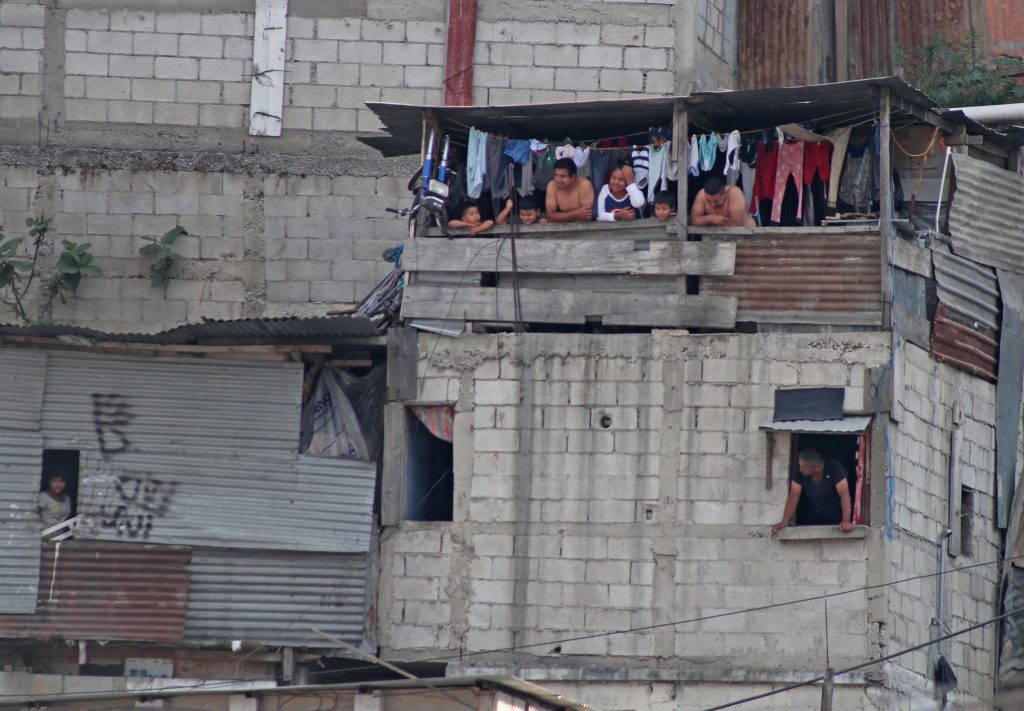
Figure 79.3 – Families looking at the calm surroundings of the biggest settlement in Guatemala during a nationwide curfew due to COVID-19. (Image: https://www.prensalibre.com/)
There are different non-profit organizations helping improve the living conditions of low-income families by building new houses or improving existing ones, and thus in getting closer to reaching Target 1. Some examples are Habitat for Humanity Guatemala and TECHO.
Without the help of volunteers, both from Guatemala and from other countries, NGOs wouldn’t have been able to achieve what they have achieved and to continue doing so. In 2019, Guatemala ranked 26 out of 128 countries in the 10 year aggregate World Giving Index – an annual report that ranks countries according to how charitable they are.9 It looks at three aspects of giving behaviour: volunteering time, donating money and helping a stranger. As probably expected, the solidarity of Guatemalans is noticeably evident during difficult times. This was also the case of the volcanic eruption in 2018 and the landslide tragedy of 2015. Within the first hours after the eruption, for example, collection centers across the country were created by private companies, organizations and groups of citizens for collecting donations of non-perishable food, clothing, medicine and hygienic items.
3. Sustainable transportation and a country with problematic public transportation
For many years now, the chaos on the roads of Guatemala has been increasing. There are different factors leading to this complex problem. On the one hand, a lack of convenient and safe public transport, which forces many to travel in private, often old and malfunctioning vehicles. And on the other hand, the lack of investment in infrastructure, which leaves many roads in disrepair. This then causes big traffic jams, especially in the rainy season when floods are frequent. Another reason for congestion are the protests that occur almost daily – citizens protesting against corruption, bus drivers protesting against high criminality and extortions, people protesting against the governments’ negligence during the orphanage fire that killed 41 girls, among other.
Guatemala’s public buses are very colourful and are therefore a touristic symbol. But things are not always as pretty as they seem. This buses are usually overcrowded, with people hanging out the doors. The drivers often race each other and the conditions of the buses are not the best – they’re old, recycled US school buses. There’s been accidents in which many people have died due to malfunctioning brakes. There’s always a big, black cloud behind these buses – a huge contamination being left behind them. Driving them is considered one of the most dangerous jobs in Guatemala, with about 689 bus drivers and assistants having died from 2011 to 2016.10 Schedules are almost non-existent and stops are made whenever and wherever the driver feels like it. You might think that if they’re overcrowded, people might use them a lot. The problem is yes, a lot of people use them, but yes, a lot of people avoid them due to all these inconveniences. As a result, the traffic is collapsing.
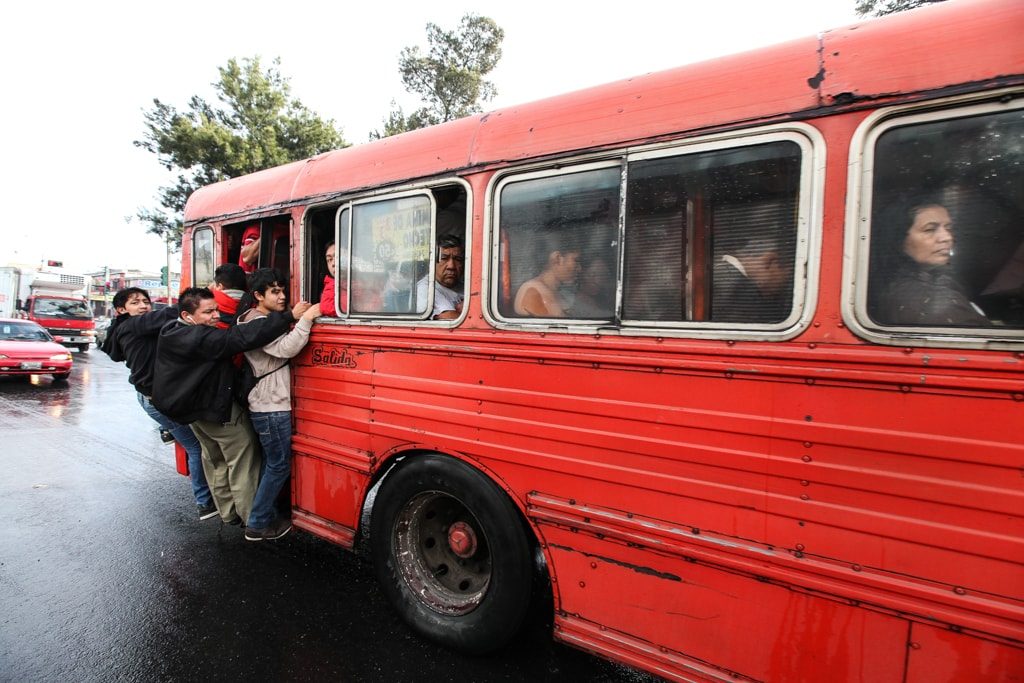
Figure 79.4 – Seeing passengers hanging from the door of an over-crowded bus is not a rare thing in Guatemala. (Image: https://nomada.gt/)
During the presidency of 2008-2012, there was an attempt to replace the public buses and thereby improve the situation with the public transportation. The project was called Transurbano and included new stops, new buses, a prepaid card and a security system. Instead of having a happy ending, it ended up as a huge failure, being one more case of corruption in Guatemala. A large part of the money assigned for this project, which was supported by a public subsidy, ended being used for another purpose: to buy real estate and air crafts and who-knows-what-else for a group of people including businessmen from the transportation and private security sector.11
Another attempt was Transmetro, a bus system with fixed stops and partly designated lanes that worked only for a part of the population and thus was not able to solve the transportation problem. This is due to limited routes that do not cover the whole city and therefore isn’t an attractive alternative for many. On top of that, it is not a profitable system, generating annual losses for its operation.12
All this points out how difficult it will be for Guatemala to reach Target 2, “to provide access to safe, affordable, accessible and sustainable transport systems for all”.1 Because doing so involves many aspects that should be taken into account.
4. The environmental impact of cities and a country with the biggest landfill of Central America – and a lack of regulations
One of the largest landfills in Central America is the Guatemala City’s Garbage Dump. It was established 67 years ago and it is the size of 8 soccer fields.13 In its surroundings live approximately 60,000 people and about 1200 kids, men and women work as trash pickers, searching for food to feed their families and looking for recyclables or products to re-sell in markets with the hope of making some money out of it.13 This dump has very few restrictions, which are not strictly followed, for what can be disposed in it. So as you can probably imagine, this is connected to poverty, contamination, diseases, lack of education and decent work. As if it weren’t enough, there’s been fires caused by emitted methane gas and there’s been landslides due to its location in a ravine. There’s been accidents due to collisions with the garbage trucks, injuries due to hazardous materials and in the past years gangs have become more present in the area, leading to an increase of extorsions and shootouts.14
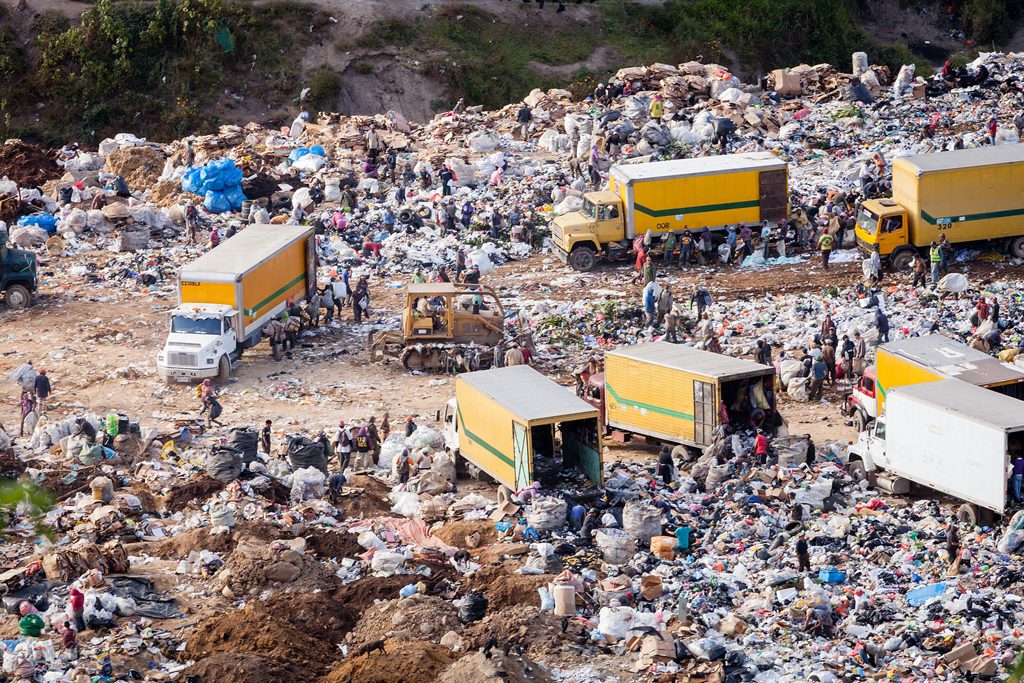
Figure 79.5 – After picking up the trash around Guatemala City, these yellow trucks transport it to the landfill. (Image: https://nomada.gt/)
This problematic is highly complex. Solving it is a huge challenge for the country and is needed to achieve Target 6, to “reduce the adverse per capita environmental impact of cities by 2030, including by paying special attention to air quality and municipal and other waste management” as well as many other SDGs that connected to this.1 It needs a new waste management system, it needs citizens to follow rules, it needs education, jobs and new areas for people to live in. Closing this landfill would mean taking away many people’s jobs and homes. And this then could lead to more poverty and more criminality.
Different NGOs have also played a crucial role in helping improve this problematic. One example is Safe Passage, an organisation which provides education and opportunities for children and adults living around the city’s garbage dump.15 It also offers these families nutritional, medical and psychological support. The help of educators and volunteers working in this and other organizations has allowed many people to graduate from high school, to have a decent job and a decent income and to improve the future of many.
5. And… where are the politicians?
To give you an idea of where they are, let me briefly introduce you to what has been happening in Guatemala in the last five years. Back in 2015, weekly peaceful protests started a fight against corruption, inspired by the revelation that the president and vice president at that time were involved in a criminal network that controlled the tax system. This led to the resignation of the president and half his cabinet.
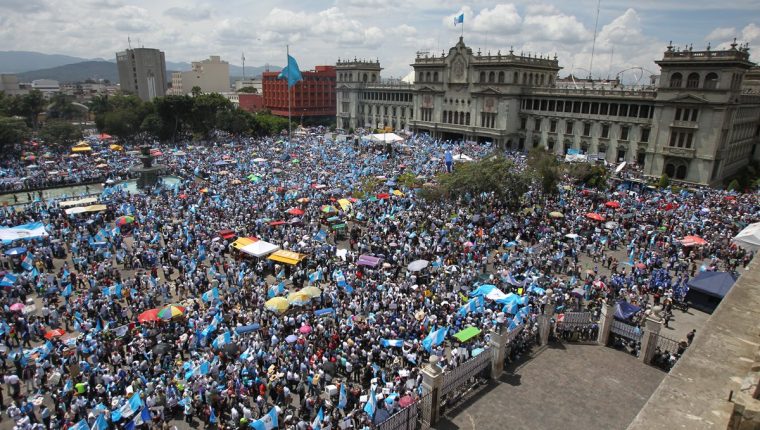
Figure 79.6 – Peaceful demonstrations against corruption took place in Guatemala in 2015 and continued in the years after. (Image: https://www.prensalibre.com/)
The beginning of this battle started way back in 2006 with the creation of the International Commission Against Impunity in Guatemala (CICIG) by the United Nations, which mandate was to investigate illegal networks that are anchored in state institution and thus to help with getting rid of the corruption that has captured the state and prevent it from functioning.16
In its 11 years of work, CICIG managed to investigate and identify more than 70 criminal structures with high complexity, to prosecute more than 660 people and to judicialize more than 120 cases with high impact.17 These cases involve former presidents, vice presidents and ministers, deputies, drug traffickers, businessmen and many other people who are linked to complex criminal structures and thus represent a potential for social damage.
In the beginning this fight against corruption generated a sense of national identity – that of being all affected by the same problem and protesting all as a whole with the same feelings of anger and disappointment. CICIG would not have been able to achieve its biggest results without those hundreds of thousands of citizens who raised their voices in the streets and on social media. But this battle ended up diving Guatemalan society between supporters and opponents of CICIG.
As a result of this and of all what CICIG revealed, the government didn’t renew CICIG’s mandate in 2019. As anything in life, CICIG had also its own negative sides. This goes beyond the purpose of my text, which is why I won’t discuss it here. So it could be that this was a wise decision or it could be that it was a way to bring Guatemala back to where it was before 2015. This question will remain unanswered for now, but hopefully I was able to help you understand a bit of what is going on over there.
The year 2015 was also an important year globally, as it was the deadline for achieving the Millennium Development Goals (MDGs), based on which the SDGs were designed. Since Guatemala had been going through this crisis for many years, you might be wondering how its results for these goals were.
As probably expected, Guatemala reached the 2015 deadline without achieving a single one. Its final report on the progress of the MDGs highlighted that it had “advanced on the achievement of the goals at a rate that [was] insufficient and, in many areas, unsatisfactory to meet the minimum development standards set out in the MDGs”.16
It’s not just in the authorities’ hands, it’s also in our hands.
It is evident that for countries like Guatemala the SDGs are treating symptoms instead of causes. The real problem behind all the other problems is corruption, bad tax systems and wrong use of taxes – in other words, the problem is that politics are not working and politicians are not doing their obligations. If we look at countries were these situations are unimaginable, let’s say like Switzerland, we can see that politicians are doing what they should (maybe not perfectly, but at least not as bad as it could be).
As a result, the governments in such countries are not reliable enough and are not sufficient to achieve the SDGs. Achieving the SDGs does not depend only on governments and authorities, but also on each and every one of us, as citizens of the world. Therefore, it is important that the SDGs provide a framework that focuses in empowering NGOs, the private sector (not only big companies, but also medium and small ones) and volunteers, raising awareness directly among the people.
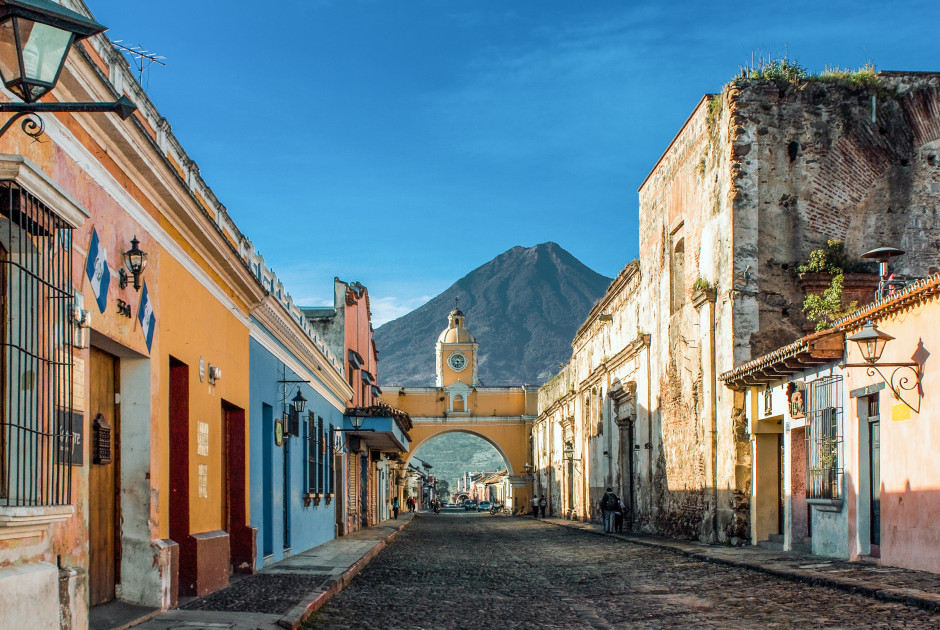
Figure 79.7 – Antigua Guatemala, with its colourful, colonial buildings and ruins, is one of Guatemala’s World Heritage Sites. (Image: https://www.travelhouse.ch/)
Note: I come from Guatemala and know many of this from living there. I tried finding sources and numbers about all these topics in case you were interested in reading more about it (which I hope you will). These are such complex topics that I cannot fit them in this blog post, but I hope I was able to contribute something to your knowledge about what is happening in another part of the world.
I am focusing here on things that can be changed, but I hope you won’t be discouraged by this but instead that you will be motivated and eager to learn more about this country and to hopefully bring a little improvement in some way. This country has beautiful landscapes, people and weather – I highly recommend you to see some pictures, read about it or maybe even visit it.
References
(1) https://sustainabledevelopment.un.org/sdg11
(2) https://www.gfdrr.org/en/guatemala
(3) https://www.theguardian.com/world/2015/oct/06/guatemala-landslide-under-the-mud-dead-families-found-huddled-together
(4) https://conred.gob.gt/site/erupcion-volcan-de-fuego/
(5) http://historico.insivumeh.gob.gt/vulcanologia-general/
(6) https://theconversation.com/how-guatemala-has-dealt-with-volcanoes-over-the-centuries-97817
(7) https://www.habitat.org/where-we-build/guatemala
(8) TECHO – Guatemala. (2015). Censo de Asentamientos Informales. Guatemala: Autor https://drive.google.com/file/d/0B0Em6tqGXKPjbWs2TFNCSzdpYXc/view
(9) https://www.cafonline.org/docs/default-source/about-us-publications/caf_wgi_10th_edition_report_2712a_web_101019.pdf
(10) https://nomada.gt/identidades/guatemala-urbana/la-vida-de-mateo-al-que-podrian-matar-en-2-meses/
(11) https://www.cicig.org/casos/case-security-and-public-transport/
(12) https://nomada.gt/blogs/existe-una-solucion-a-nuestro-caos-vial-bienvenidos-a-la-ciudad-del-futuro/
(13) https://nomada.gt/cotidianidad/el-presente-de-la-basura-en-la-ciudad-del-futuro/
(14) https://roadsandkingdoms.com/2016/life-in-a-landfill/
(15) https://www.safepassage.org
(16) https://www.ipinst.org/wp-content/uploads/2019/05/1905_-Guatemalas-Achilles-Heel.pdf
(17) https://www.cicig.org/cicig/informes_cicig/informe-de-labores/informe-final-de-labores/#informe